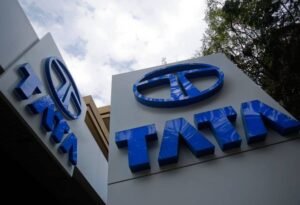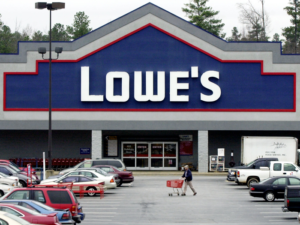“Brand personas are the personality of your company. It’s what you want people to think when they hear about your company or see your logo.”
A brand persona is an important aspect of brand identity. It is the emotional, behavioural and psychological traits that form the personality of your company. A strong brand persona will help differentiate your business from competitors, build trust with customers, provide clarity for employees and increase customer loyalty. We will go over what a brand persona is, how to create one for your company and the benefits it can bring you.
Jump Ahead To :
What are Brand Personas?

A brand persona is the personality of your company. It’s what you want people to think when they hear about your company or see your logo. A good example is Apple, which wants its customers to view them as stylish and innovative and professional and competent. Even if some users don’t agree with those associations, that’s how they still think of Apple products because it was cultivated over time by strong branding efforts from the company.
Here are a few things to keep in mind for creating a great brand persona:
– Be consistent – What we mean by this is to make sure your branding across all social media platforms and press releases are similar. Don’t have one page calling yourself cutting edge while another talks about reliability. Keep messaging similar across everything you do!
Don’t get too personal: Your brand persona should be relatable but don’t go overboard with sharing details of your life or employees’ lives. A little personality goes a long way, and customers will appreciate it more than if they feel like the person behind the company has no idea who they are as people (if that makes sense). You can never really know what someone wants unless you ask them directly, so asking questions on surveys or other feedback mechanisms can be a great way to understand what people think.
Be specific: Make sure you’re not just defining the company’s values in general terms, like “our customers are our number one priority,” which is something most companies say without actually meaning it. Instead, define what that means for your brand and how you show that through actions. For example, if customer satisfaction is important, share real stories about improving experiences and meeting individual needs.
Consider your target audience: Keep who will see this person in mind as well – brands often fail here by creating a brand persona that only they would relate to. Be consistent: We mean by this to make sure your branding across all social media platforms and press releases are similar. Don’t have one page calling yourself cutting edge while another talks about reliability. Keep messaging similar across everything you do!
Building Brand Personas

– Go beyond demographics and psychographics. Identify their values, attitudes, motivations and interests through market research. Use this information to define who they are as individuals so you can speak directly with them in mind. This will help form the basis of your messaging strategies, which leads us to step two.
– Developing Your Messaging Strategy & Creative Brief – Once you know whom you’re speaking with, it is time for creating marketing messages that will resonate with each target persona or segmentation within your audience. You must develop creative briefs around specific goals using words like ‘who’, ‘why’, ‘where’, and ‘when.
– Building your brand story – Once you flesh out the messaging strategy, it is time to begin building your overall brand narrative. This will form the foundation of all communication efforts with a clear message about what makes you different from everyone else in your category or industry (i.e., how are you unique?) You can then build on this uniqueness by using words like: why, where, when and who, as outlined above within each piece of copy across various media platforms such as print/digital collateral, email marketing campaigns etc.
– Building your visual brand – Building a strong and consistent look, feel and tone across all of your marketing collateral goes hand in hand with the messaging strategies you develop. A good place to start is by creating or finding an existing logo that can be used as a foundation for future assets such as website designs, email templates etc. You will also need custom images that help support the story you want to tell about who you are and what makes your business unique.
– Building Your Voice & Tone – Once branding guidelines have been established, it’s time to build out how this should play out in a written form. This includes voice/tone through writing style (i.e., friendly vs formal) and the frequency of publishing content on various platforms from social media to blog posts. Building a strong voice and tone is key as it will help guide the content you create on various channels, which means more opportunities for sharing across social networks.
– Building Your Content – Building out your content calendar or editorial strategy should be done in conjunction with building out your messaging strategies, branding elements, along with defining who your audience is through market research. This allows for easier development of ideas around what topics are most important to cover within each piece of copy, whether that’s email marketing campaigns, blog posts etc.
– Building Community & Engagement – Building community happens organically over time. Still, it can also be helped by leveraging paid advertising platforms such as Facebook ads to target communities based on interest/demographics. Building content that is valuable to your target audience will help build trust, leading to community growth. You can also develop contests or promotions around specific events/holidays to leverage engagement through various channels such as social media, email marketing etc.
– Building Your Resources – Building out resources can include anything from blog posts, eBooks, guides, reports along with presentations and other webinars. For example, you’re helping educate your audience on certain topics related to what makes you different from everyone else in the category. These assets should be available freely across all platforms so they can easily spread virally by sharing between peers within communities of interest and those who might not currently know about how great it is working with you, which brings us to the word of mouth marketing.
Building communities, engaging your audience, and creating great content are all ways people get excited about what makes your business different from everyone else.
Building trust – Building trust with consumers can be done by providing valuable content on topics they care about and building a community around those who share interests/values/ideas etc. This creates an environment where you’re seen as a thought leader within your industry, which leads to brand loyalty from those who want to learn more or help contribute their voice towards helping achieve common goals and making them feel good for being part of something much bigger than themselves!
Benefits Of Brand Personas

Some Benefits of having a Brand Persona are that it helps to give your company direction. It also gives you ideas about positioning yourself in the marketplace and what consumers will be receptive to. As well as this, if done correctly, then it can create an emotional connection with your customers, which is vital for building relationships and trust, which affects the bottom line.
Not only this, but it can help save time and money on design, marketing, and copywriting as you already have a starting point from the persona that will work across all of your communication channels, for example, websites, social media posts etc.
A brand persona is not just about putting together some fancy words or ideas. It is about getting to the core of your business and what makes it stand out from all of the other competitors in its marketplace.
This can be done by using a range of different tools such as Brandcrowd, Design Crowd or 99designs that allow you to give your customers an insight into how they would like your company to look and give feedback about your company or product.
Brand persona can help attract new customers, especially if your target market is interested in the personality you have created for the brand. Another great reason for having a brand persona is beneficial is that they allow companies to build trust with their audience more easily than just using words on a page.
Differentiating Your Business With The Brand Personas
A brand persona is the best way to differentiate your business. It humanizes a company and tells people what they’re all about. Differentiating with a persona can help drive sales, improve customer loyalty, create more engaging content marketing, make you stand out in crowded markets, and generally turn heads towards your product or service—even if it isn’t top-of-mind at the moment of purchase.
Differentiation is an important part of branding because it allows you to create differentiation between the market competitors and helps increase customer loyalty. Differentiation can also be used to attract new clients or increase sales figures by creating a high demand for the product that has not been available before. Another way differentiating companies work is through messaging, which involves developing key messages that are communicated at all times to stakeholders- this ensures consistency throughout the organization’s activities.
One should always remain focused on their target audience, use research findings from surveys conducted within target groups, focus groups etc. These will help you derive what they need & want out of your offering. Differentiating your company with a brand persona can be an important way to create differentiation among the competitors in the market. Differentiation is also one of the tools that can help increase loyalty among customers.
Examples of companies that have excelled in brand personas
Below are some examples of companies that excel when it comes to their use of brands and branding:
Nike – As a sports company known for its high-quality products designed by world-class athletes such as Kobe Bryant and Serena Williams, they have developed strong relationships with customers through the years via sponsorships and endorsements from well-recognized stars in every sport imaginable. Customers feel like an integral part of team Nike because there is so much interaction between them. The customer can’t help but think, “I’m just like this athlete”. This goes a long way towards building trust with consumers because people want to be associated with the best.
Apple – Apple has created a unique identity as an innovative brand known for its high-quality products and having the latest technology on the market. They have built this company to be remarkable by promoting their product through celebrities such as Lady Gaga, who promote their products without paying. This creates an emotional connection between consumers and companies because people want to feel like they belong to the exclusive club that these celebrities do. Reaching out to customers in different countries worldwide instils trust in them about where Apple stands globally.
Adidas – Adidas’s main purpose was originally just focused on making footwear. Still, over time they realized how important it was to build upon other business areas to create a better overall experience for their customers. They have since expanded into the clothing, shoe and accessory market, creating an even bigger fan base around themselves. Adidas has also been known to bring on some of the best young designers from all over the world, which is why they are often referred to as one of the more creative companies out there.
Wrap Up
The power of a brand persona is that it can be constantly reinforced and moulded to fit your company’s needs. However, keep in mind that it’s not just about you – people have their associations with certain words or colours or shapes. Find out what they are so you don’t inadvertently create negative emotions when marketing your product! If this sounds like something you might need help with, let our team know how we can assist!
We’ll work closely with you to develop an effective marketing campaign based on your customers and what they care most about. What do YOU think? Which associations does YOUR business want its target market to associate with? Contact us today if there’s anything else we can help answer for you!






